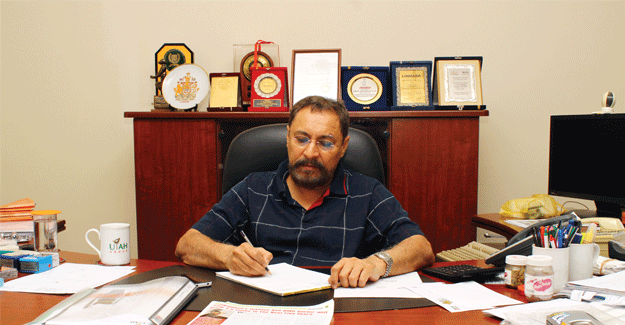
Bangladesh: We must move up the value chain and aim at earning at least us$ 7 a unit
Razzak Sattar, an outspoken and forward looking entrepreneur established his apparel business with a lot of confidence and no money, way back in 1976. Today, UTAH Group clocks an export turnover of US$ 100 million, employs 13,000 people, and has established vertically integrated facilities. Razzak Sattar, Managing Director of UTAH Group, has built his empire on strong ethical business practices. In conversation with Textile Excellence.
What, according to you, are the prospects and challenges for the RMG industry?
The Bangladesh RMG industry exports US$ 22 billion worth of apparel, this can easily reach US$ 50 billion, given that the total global market is worth over US$ 350 billion. This is exclusive of China. If China begins importing garments, that market alone is worth around US$ 300 billion. How can we achieve US$ 50 billion export turnover - we just need gas, electricity and infrastructural support upto the level of ports, and we will witness the industry grow phenomenally. After Rana Plaza, the industry is taking fire and building safety seriously. We are complying with international safety, social, environmental standards.
What role do you envisage for the government to ensure the industry grows to its true potential?
The present government is very much in favour of industrialisation. The new commerce minister is a man of reason. He is willing to do everything to facilitate trade. The main grouse of the industry remains poor communications, port facilities. It takes seven days to release cargo coming from Chittagong to Dhaka. In China, it takes six hours to release the cargo. This is the infrastructural help we need from the government, so that we can optimise our competitive strengths in world trade.
How would you evaluate Bangladesh's competitive advantage?
We certainly have a competitive advantage. Bangladesh is still considered to enjoy the lowest costs. For instance, a buyer can source a polo shirt for not more than US$ 2 a piece from here, whereas from China, the garment would cost around US$ 7 a piece.Sri Lanka is also quite competitive, mainly because of its exchange rate, and the higher productivity it enjoys due to an educated and skilled workforce; Sri Lankan garmenters hire industrial engineers to conduct time and motion studies, etc, all quite scientifically done. Bangaldesh RMG industry, over the last 30 years, has grown because of its cost advantages. This is the time to become more professional in our production and marketing approach, to ensure that we enhance our competitive edge.
Tell us about your journey in the Bangladesh garment industry?
UTAH Group started its business in 1976. I started with absolutely no money in my pocket. I went to many banks for seed money because I did not have the collateral security at that point of time. One of the banks, Islami Bank without the collateral security, agreed to give me the money. Today I am very loyal to the Islami Bank, all my business is through the Islami Bank because they trusted me. From nothing, today we export apparel worth US$ 100 million. I follow a conventional approach of not depending on too many loans, the loan amount should never exceed 15% of our collateral, this is the rule of thumb I follow. I strongly believe in ethical business practices.
How do you view emerging competition in South Asia?
As I mentioned, buyers are today able to procure at less than US$ 2 a piece, we should be able to earn at least US$ 7 a piece. Turkey earns US$ 6-7 a piece. As competition in South Asia gains momentum, it is necessary that Bangladesh vacate the range of US$ 1.50-2 a garment, let countries like Myanmar occupy that rung. We need to move up the value chain, after 30 years in this sector, and after achieving the second place in global apparel supplies.We have cheap labour, but we should not sell at cheap prices. We need to upgrade our labour, to improve the quality of products, to make garments of at least US$ 4 a piece. Vietnam and Cambodia are not our competitors, if we move up the value chain. And this is achievable, if all stakeholders make concerted efforts.
Textile Excellence
If you wish to Subscribe to Textile Excellence Print Edition, kindly fill in the below form and we shall get back to you with details.








